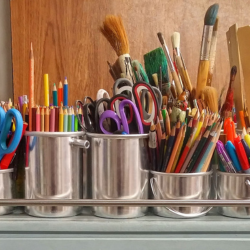Using Poetry to Help Children and Adolescents with Chronic Pain
As most people realize, poetry has a way of sharing one’s feelings and ideas to the reader in a way like no other. The writer is able to express themselves in a way that allows people gain a better of understanding of a topic or what someone is going through. With that in mind, researchers looked at poetry a way to help children and adolescents who have chronic pain.
Publishing their findings of the research in the May 2025 issue of The Journal of Pain, researchers delved into the topic of how poetry was being used to help young people convey feelings about the pain they experience (1). They searched through prior published studies on the topic to see what information has been collected to date.
They included 177 unique studies in their analysis, which included 5,875 younger people, including poetry as a means of expressing the pain that they were experiencing. Of the study participants, 75% experienced chronic pain, while 24% had acute pain, and 93% of those in the study were in the 11-20 age range.
The participants had written various poems to convey how the pain the experience feels and impacts their life. There were common themes among the poems, which included that the pain was hard to bear, it was scary, it was constantly in their back of their mind, it made them feel alone, it made school a hard fit, it hurt them deep inside, and that it had changed them to someone they don’t like as much.
As the researchers point out, an absence of a voice about the pain does not mean that someone is not in pain or that they are being negatively impacted by it. Many young people simply don’t know how to share with others what they are feeling. Pain is a unique experience, as is poetry. Using poetry as a way to help young people express their feelings provides a tool for both the patient and the caregivers and professionals who are helping them to manage it. The poems help them to find meaning, develop compassion, and reduce burnout.
Not knowing what the chronic pain experience is like for children and adolescents is concerning because it helps to create their environment, and many go on to be adults who experience chronic pain. The more tools we can provide them to have an outlet for sharing what they are experiencing and providing a way for those around them to better understand it is going to be a good thing.
Source:
The Journal of Pain. Exploring the emotional impact of pain on children and adolescence: a poetic meta-ethnography. May 2025. https://www.jpain.org/article/S1526-5900(25)00561-9/fulltext







